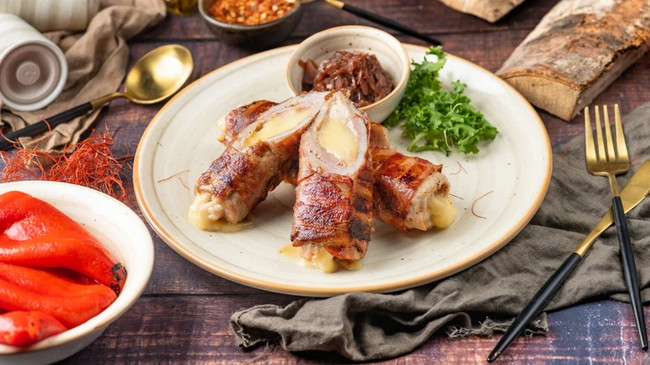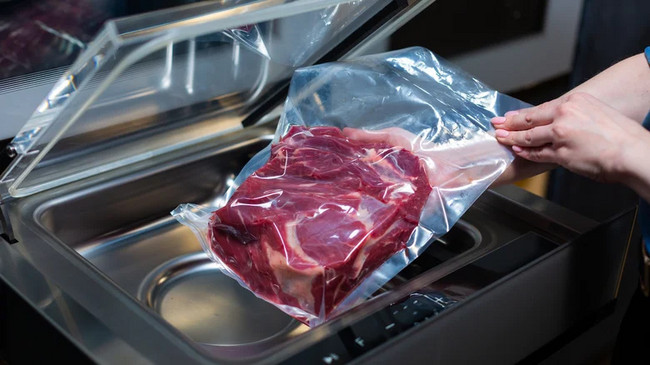✕

Column: industry Tag: Sous Vide Cooking,Stuffed Steak,Chef Advice,Cooking Methods Published: 2024-08-28 17:03 Source: www.mashed.com Author: MARIA SCINTO

If you're going to stuff your steak with cheese, meat, vegetables, or any combination thereof, one concern you may have is that the meat will dry out before the filling is cooked. When in doubt, it's always best to seek expert advice, so we asked a steakhouse chef how to do this most effectively. Daniel Ontiveros works at Carversteak, which is an award-winning eatery located on the Las Vegas strip. Ontiveros, as it happens, does have a go-to method for stuffed steak: He's a fan of sous-vide cooking.
Ontiveros recommends cooking the steak sous vide for about an hour, more or less, depending on how large it is. As he describes it, sous vide is "a gentle cooking method" and one that he explains "will help set the proteins [and] retain moisture and flavor." After the steak has had its water bath, he says to finish it off by searing it on both sides in a cast-iron pan or on a grill until it reaches your preferred degree of doneness.
But what if you don't have a sous vide machine?

While sous vide machines may be standard in restaurant kitchens, not every home cook owns one. They're pricey, bulky, and aren't always easy to operate. If you do want to try using Daniel Ontiveros' method for cooking a stuffed steak, you needn't find the funds or counter space to purchase your own sous vide machine. Instead, you can use a couple of different ways to try sous vide cooking on the cheap.
One way to sous vide a steak, sans machine, involves filling a cooler with 140 degree Fahrenheit water — to get the water to the correct temperature, bring it to a simmer, then add cold water as necessary. Enclose your steaks in heavy ziplock bags, then submerge them in the water. An un-stuffed steak might be done in an hour or so, but a big braciole may need up to 10 hours or more.
While the cooler's insulation can trap heat just as well as it keeps in cold, some heat loss is inevitable over such a long period of time. This means that you'll need to check the water temperature frequently (perhaps every half hour) and add boiling water once it dips below 140 degrees Fahrenheit. A somewhat less labor-intensive method involves putting the sealed steaks in a pan of water and baking them in a preheated oven at 140 degrees Fahrenheit. In both cases, a final sear will help ensure that your steak and its filling are completely cooked.
Previous:The Preparation Tip For Restaurant-Worthy Soup
Next:The Original Gardetto's Snack Mix Recipe Was An Effort To Salvage Breadstick Trimmings
Hot key words
Hot Products
Popular Vendors